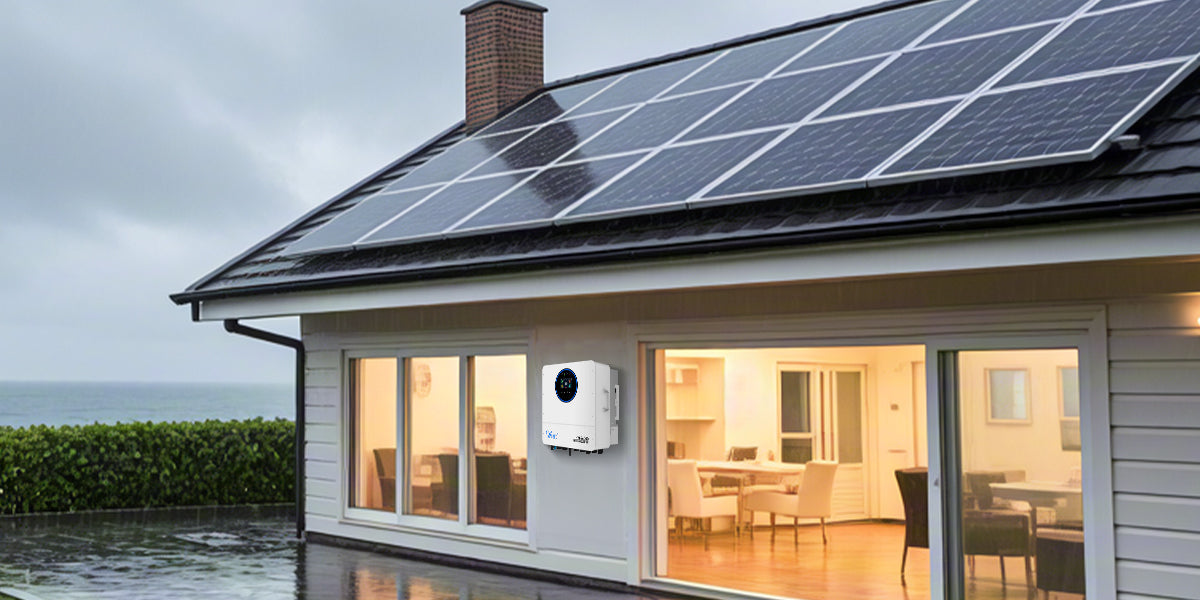Choosing the right portable solar generator can feel overwhelming with all the technical specifications listed on the box. However, understanding a few key metrics—watts, watt-hours, and the available ports—is essential to selecting a unit that will meet your power needs, whether you're camping, preparing for an emergency, or working on a remote job site. This guide will break down these core concepts to help you make an informed decision.
Power vs. Energy: Watts (W) and Watt-Hours (Wh)
When comparing solar generators, the terms "watts" and "watt-hours" are the most important specifications to understand. While they sound similar, they measure two distinct, though related, concepts: power and energy.
Think of it like speed and distance: watts are like the speed you're driving at a specific moment, while watt-hours are the total distance you've traveled.
- Watts (W) measure power, which is the rate at which energy is being used or produced at any given moment. According to the International Energy Agency, a watt is the rate at which electrical work is performed. An appliance with a higher wattage rating consumes energy at a faster rate. This tells you what devices the generator can run at the same time.
- Watt-Hours (Wh) measure energy, which is the total amount of power used over a period of time. One watt-hour is the energy equivalent of one watt of power being used for one hour. This specification tells you how much energy the generator's battery can store—essentially, how long it can power your devices before needing a recharge.
Key Specifications to Consider
When you're ready to choose a portable power station, the primary specs to analyze are its capacity, power output, and the types of ports it offers.
Capacity (Watt-Hours)
A generator's capacity, measured in watt-hours (Wh) or kilowatt-hours (kWh, equal to 1,000 Wh), indicates how much energy the internal battery can hold when fully charged. This is like the size of the unit's fuel tank. A higher Wh rating means a longer runtime for your devices. For example, a 1000Wh generator can power a 100-watt device for approximately 10 hours (1000Wh / 100W = 10 hours). To determine your needs, you can estimate your total energy consumption by multiplying an appliance's wattage by the number of hours you'll use it. As noted by GilbertPrepared.org, summing up the watt-hours for all your devices will give you a target capacity for your generator.
Power Output (Watts)
The power output, measured in watts (W), tells you the maximum amount of electricity the generator can deliver at any one moment. This is often referred to as the "running" or "continuous" wattage. You must ensure this number exceeds the total wattage of all devices you plan to run simultaneously. For instance, if you want to power a 100W television and a 50W lamp at the same time, you'll need a generator with at least 150W of continuous output.
It's also crucial to consider surge power, sometimes called peak power. Many motorized appliances, like refrigerators or power tools, require a brief, high burst of power to start up, which can be much higher than their running wattage. A generator must be able to meet this peak demand to turn the appliance on. If the starting wattage of your device exceeds the generator's surge rating, it won't be able to run it.
Ports and Outlets
A portable power station is only useful if it has the right connections for your devices. Different models offer various types and numbers of ports. Common options include:
- AC Outlets: These are the standard three-prong wall outlets you have in your home, used for powering appliances like laptops, fans, and small refrigerators.
- USB-A Ports: Still common for charging older or smaller electronics like smartphones, tablets, and headlamps. Some models feature USB-A Fast Charge ports, which provide higher wattage for quicker charging of compatible devices.
- USB-C Ports: This modern, universal standard is used for most new smartphones and laptops. High-wattage USB-C Power Delivery (PD) ports can rapidly charge larger devices, sometimes delivering up to 100W of power.
- 12V Car Power Output: Also known as a "cigarette lighter" port, this DC outlet is used to power devices designed for vehicles, such as portable coolers, tire inflators, and some RV appliances.
- DC5521 / Barrel Plugs: These smaller DC outputs are often used for devices like mobile WiFi routers, certain drones, and other electronics, allowing for more efficient charging by avoiding energy loss from DC-to-AC conversion.
- Anderson Port: A heavy-duty DC connector commonly used to get power to the circuitry of RVs and camping trailers.
When charging multiple devices, it's important to understand that the total power output is often shared across the ports. As explained by experts at Unite-to-Light.org, if multiple devices are drawing power, it can slow down the charging speed for all of them unless the unit features split circuitry for each port.
Putting It All Together: Choosing the Right Size
To choose the right generator, first, list the devices you need to power, then determine their wattage and how long you need them to run. This will help you calculate the necessary capacity (Wh) and output (W).
According to guidance from Solar-Estimate.org, different generator sizes are suited for specific scenarios:
- ~300W / ~300Wh: Ideal for short trips, charging small personal devices like phones and laptops, or running a computer for a few hours.
- ~1,200W / ~1,000Wh: Good for longer camping trips where you might power a small coffee maker or other modest appliances.
- ~2,400W / ~2,000Wh: Suitable for running most appliances in an RV or for providing emergency backup power to a few essential home items.
- ~4,000W / ~4,000Wh: Powerful enough for serious RV applications, partial home backup, or running power tools at a worksite.






Leave a comment
All comments are moderated before being published.
This site is protected by hCaptcha and the hCaptcha Privacy Policy and Terms of Service apply.